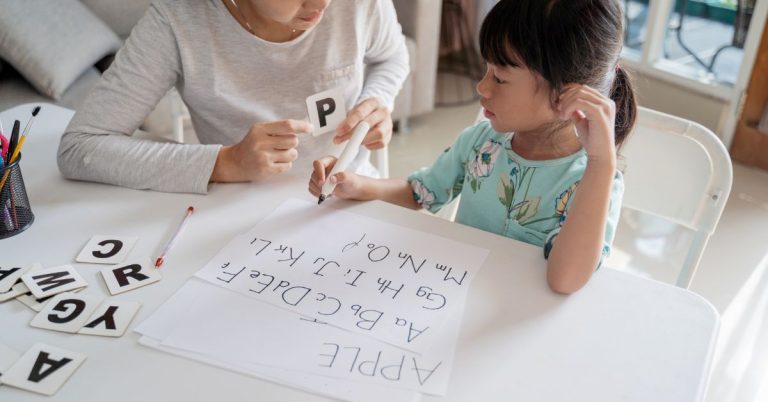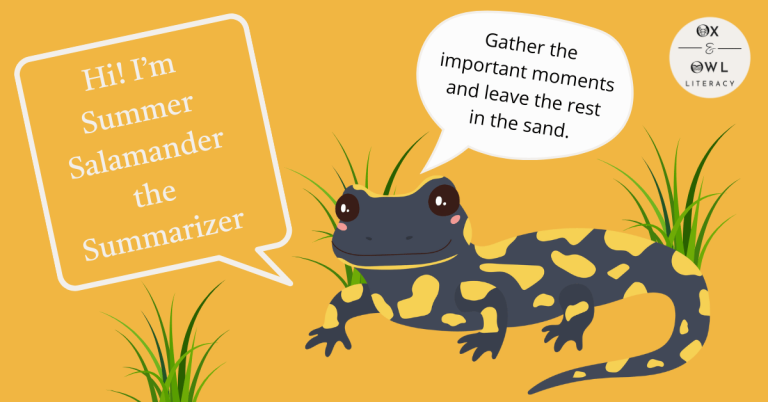The Role of Compound Words in Literacy Learning
Discover how learning compound words enhance children’s future reading and writing skills, and also develop their critical thinking.

Ox & Owl Questions to Ponder
Have you ever noticed how many compound words pop up in everyday conversation? How might intentionally pointing these out to kids boost their curiosity about language?
How do you think a child’s confidence in reading might change once they realize they already “know” parts of bigger, seemingly complex words?
How can compound words be incorporated into daily conversations or activities to strengthen a child’s literacy skills?
What happens to a child’s comprehension when they can quickly recognize and mentally “chunk” compound words while reading?
How might inventing silly new compound words encourage young learners to think outside the box while building their language skills?
What happens when you put the word ‘dragon’ and the word ‘fly’ together? You get a new word, ‘dragonfly’. The word ‘dragonfly’ is an example of a compound word. When children are in kindergarten, they will be introduced to the concept of compound words.
Compound words are an essential part of helping build your child’s vocabulary and understanding of language structures. The process of identifying, constructing, and deconstructing compound words engages children in critical thinking and problem-solving. When children can break down compound words into their individual components, it helps them recognize familiar words and decipher new ones.
They are especially beneficial as children move into higher elementary grade levels and need to be able to read and spell larger amounts of text.
In this article, we discuss the different types of compound words and the ways activities teaching compound words help bolster young children’s literacy development.

Three Types of Compound Words
When children first learn about compound words in kindergarten, they are typically introduced to closed compound words. As students move into later grades, they are introduced to other types of compound words too, like hyphenated compound words and open compound words. Each type adds new challenges and opportunities for growth in reading, writing, and vocabulary development.
Closed Compound Words
A closed compound word is made when two separate words are combined to form a single new word.
Some examples are the words ‘moonlight’; sunflower; and toothbrush.
Hyphenated Compound Words
A hyphenated compound word is made where the words are joined together with a hyphen. Often used for expressing relationships or for emphasizing qualities or characteristics.
Some examples are the words sister-in-law; finger-painted; rainbow-coloured.
Open Compound Words
An open compound word is made when two or more words make a new word, and the words retain a space between them.
Some examples are the words ice cream; swimming pool; and seat belt.
It can sometimes be tricky to know when or when not to use a hyphen. The use of a hyphen can even change the meaning of a sentence.
For example, compare the phrases ‘stay at home mom’ vs ‘stay-at-home-mom’. The first one might be read as someone telling their mom to stay home, whereas, the second one clearly helps us readers know the work of this mom is full-time care of her children and home.
For higher elementary grade level students, here is a video to help them understand why and when hyphenating words is helpful.
Compound Words Develop Pre-Literacy Skills
Compound words play a role in enhancing both reading and writing skills by offering a multitude of benefits to learners. Here’s a breakdown of how the understanding of compound words contributes to literacy development:
Vocabulary Expansion
Learning compound words helps build children’s vocabulary. Instead of memorizing individual words, learners grasp the interconnectedness of language, discovering new terms by understanding the combination of familiar ones. Having a wide range of exposure and knowledge of vocabulary is important for all literacy components.
Improved Reading Fluency
As readers become proficient in recognizing and understanding compound words, their reading fluency improves. They can navigate through texts more swiftly, focusing on comprehension rather than getting bogged down by individual words. Fluency is a key component in developing overall reading skills and fostering a love for reading.

Writing Precision
Compound words make writing more exciting. Instead of using long phrases, kids can use compound words to make their writing clearer and more fun. In writing, the use of compound words allows for more precise and concise expressions. This not only helps kids share their thoughts better but also lets their creative spark shine, giving them an understanding of how words fit together like puzzle pieces.
Critical Thinking Skills
The process of identifying, constructing, and deconstructing compound words engages learners in critical thinking. It prompts them to analyze the relationship between individual components, deducing meanings and making connections. These cognitive skills are transferable to various aspects of reading and writing and fostering analytical thinking.
Phonological Awareness
Compound words help children build their phonological awareness skills. Phonological awareness is the ability to tune in to the rhythm and various sound patterns of a spoken language. This awareness allows us to have a better understanding of how language works, for example, that sentences are made up of separate words and that words can be made up of more than one syllable.
As children develop their phonological awareness skills, they begin to identify, blend, segment, and manipulate the sounds of a spoken language. Children start with these skills by practicing at the word level and syllable level, which contain larger chunks of sounds.
WordPlay Zone

Sing a Counting Song About Ants
Why not sing The Ants Go Marching with your little learner(s)? This is a classic song that helps teach numbers and rhyme.
Get the lyrics for the song The Ants Go Marching and other classic nursery rhymes and songs!

Guess the Compound Riddle
Where ants go marching ten by ten,
You’ll find me gleefully following them.
A tasty snack, a delicious treat,
Ants are what I love to eat.
What Am I?
Teach Compound Words Through Interactive Literacy Activities
Compound words are tools that open doors to a richer understanding of language. Engaging literacy games and activities transform learning compound words into a playful learning experience, making it an enjoyable challenge for young minds.
Closed Compound Word Scavenger Hunt

Go on a classroom compound word scavenger hunt with your students. What other compound words can they find?
Read Alouds – Compound Word Picture Books

Reading is a great way to introduce children to compound words. There are some fun picture books focused on bringing your child or student’s attention to compound words.
A couple of books to try are If You Were a Compound Word by Trisha Speed Shaskan and Once there was a Bull…Frog by Rick Walton.
Key OOLiteracy Takeaways

Nurturing Little Minds, Sparking Big Dreams

I’m happy you’re here!
Hi, I’m Julie, the passionate creator of Ox & Owl Literacy. I enjoy empowering families and educators with wonderful resources to inspire fun, imaginative, and joyful learning opportunities for young kiddos. You’ll find lots of recommended books, reading resources, and creative learning activities on this site aiming to help children fall in love with language, books, reading, and the transformational power of stories.









